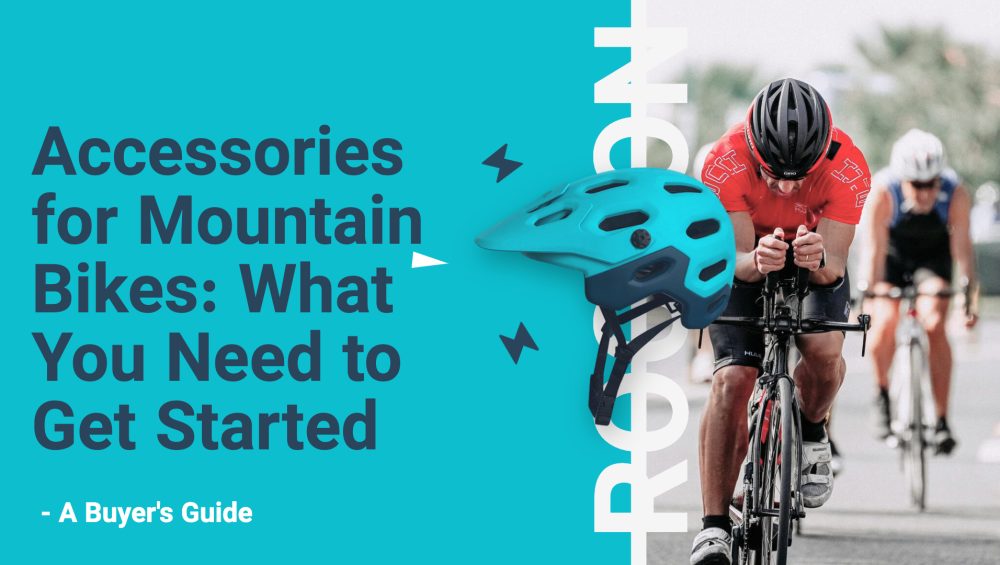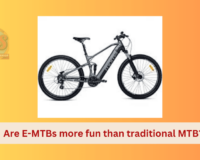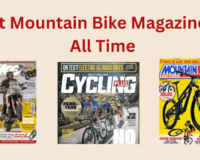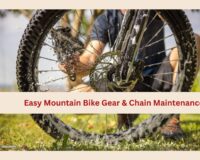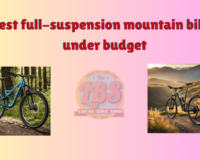Confused about what gear you need to get started in mountain biking? Are you just getting started with mountain biking and looking for advice on how to make the most of it?
No matter how overwhelming the number of mountain bike accessories on offer can be, never fear, as with the insight from the deep down valley trails and rocky mountains, these mountain bike accessories are sure to protect you from accidents and keep you safe.
Helmet
If you are getting ready to travel on the trail, a helmet is one of the essential safety accessories. A full-face helmet provides extra protection for downhill mountain biking for your face, chin, and mouth. In contrast, mountain bike helmets cover more occipital and temporal regions than road bike helmets.
The trend of “convertible” full-face helmets is growing with trail and enduro riders that allow the chin guard to be removed for less challenging trails or climbing. The steeper, more technical riding locations demand increased performance and safety, suggesting a helmet with MIPS technology. The vents on mountain bike helmets tend to be larger since they are designed for good ventilation at lower speeds.
Mountain bikers commonly opt for visors (aka, peaks) to protect from the sun and glare and to help deflect foliage from overhanging branches.
The ability to attach lights or a GoPro to some mountain bike helmets is another unique feature. With its MIPS (Multi-directional Impact Protection System), integrated peak, camera mount, good coverage around the sides and back of the helmet, and plenty of ventilation on the top, the Fox Flux is a tremendous all-around MTB helmet.
If you want to select the best helmet for your riding click here !
Shoes & Pedals
Footwear plays a crucial role in bike control and performance since it is one of three contact areas between you and your bike. Mountain bike shoes are tough, durable, and stiff so that power is transferred efficiently.
A mountain bike rider can choose between flat pedals and clip-in pedals when riding. There are several differences between mountain bike pedals and road cycling pedals, including the ability to be clipped in on both sides, shed mud, and the availability of a smaller cleat for easier walking.
Clipless pedals (aka SPD) are the preferred choice for most cross-country rides. In this way, the rider can put down power more effectively while also using the pulling motion to complete steep climbs and tricky trail features.
Both mountain bikers and downhillers use the exact mechanism, only with a cage around the pedal to provide a better platform and make it easy to find the pedal after getting a foot out.
Alternatively, flat pedals – which are comprehensive and robust – are also available. Pins are typically attached to flat pedals to help your foot grip the pedal.
The type of shoe you wear should match the style of pedal you use. Compared to a regular sneaker or skate shoe, flat-soled and cleat-specific MTB shoes offer more foot protection, a stiffer sole, and specially designed tread.
Decide which pedals are right for you based on the riding you intend to do. Cross country shoes designed for performance are built light and stiff but are not suitable for walking in.
However, gravity shoes can be heavy and overly restrictive for extended pedaling, even with ample foot protection against rocks. Generally, trail shoes should have a grippy tread, a midweight and a reasonably stiff sole.
Buy the riding accessories here !
Clothing
How are mountain bikers and roadies different?
Your riding experience will be more comfortable if you wear mountain bike clothing. Unlike casual clothing, MTB clothing has more features than it appears: it’s flexible, breathable, often reinforced, and is made of a tougher fabric to prevent ripping in case you come off the bike.
Mountain bike shorts should have at least one zip pocket, a sturdy fastening system and should be of a decent length so they won’t ride up. Many shorts will come with removable chamois inner shorts so that you can choose to use the extra padding. Under the baggy mountain bike shorts, it is popular to wear normal road cycling knicks or bib shorts.
Look for a breathable jersey, has space for padding (if you choose to use it), and is suited to your intended riding climate. Unlike T-shirts, many mountain bike jerseys are longer, feature strategically placed seams (not under your shoulders where your pack will rub you raw) and are made of wicking fabric.
Body armour and pads
You should pad up with some protective body armour as the progress of the trail, and you push your limits. Start with a pair of flexible knee pads, and then you can expand to elbow pads, knee braces, and back protection if desired.
Knee and elbow pads for mountain bikes come in many sizes, so make sure they’re tight enough with sufficient flexibility so you can pedal and ride comfortably. You can secure them comfortably with velcro or BOA wires on most brands. The same applies to elbow pads.
Designed to slide on impact, hard plastic exterior mountain bike pads are perfect for adrenaline-infused rides. Softer pads are preferable for general trail riding since they allow for more effortless pedalling and better ventilation.
Eye Protection
On a bike, it’s crucial to wear trusted and functional eyewear. Sunglasses offer more than protection from the sun’s harmful rays. They protect your eyes from debris and provide impact protection.
The eyewear for mountain biking consists of both sunglass and goggle options and is a step up from your ordinary fashion sunglasses. When travelling through scrub at high speed with an exposed face, it’s worth considering when the helmet curves around your head and provides extra impact protection. With the recent trends in lightweight enduro helmets, you no longer have to wear goggles to look ridiculous.
Many brands also offer polarized lenses (an extra layer of glare-reducing technology) and photochromic lenses. In addition, it enhances visibility on shaded trails, responding to the light and ensuring the user’s ability to see trail features, debris, or dangers as they arise.
For accessories related to eye protection click here !
Hydration Options
When you think about mountain biking, you might not think about hydration solutions right away, but after riding for over 30 minutes, you’ll quickly realize they are essential. Not all mountain bike frames are equipped with bottle cages, which means that even for short rides, a hydration pack is a great way to keep hydrated.
If you’re biking for longer than an hour and a half, you’ll want a hydration bladder with a little more volume. However, if you’re riding for more than an hour, you might want something with a larger volume.
Choosing a bidon (cycling speak for a bottle) means selecting one that fits your needs, has a safe safety cap to prevent spills, is easily cleaned and can be refilled, and has enough capacity (amount of fluid it can hold).
In the event you elect to use a hydration pack instead of a bidon, make sure it has enough capacity to satisfy your hydration and riding needs, as well as room for any spares you may require during a long ride.\
Mountain bikers are returning to hip packs in recent years. An optimal hip pack will provide a less intrusive fit and enough water for a few hours of riding, despite having less storage and water capacity than a hydration pack.
For the hydration product, click here !
Searching for something but not finding it? Bicycle accessories from leading retailers are available at the local shop.

